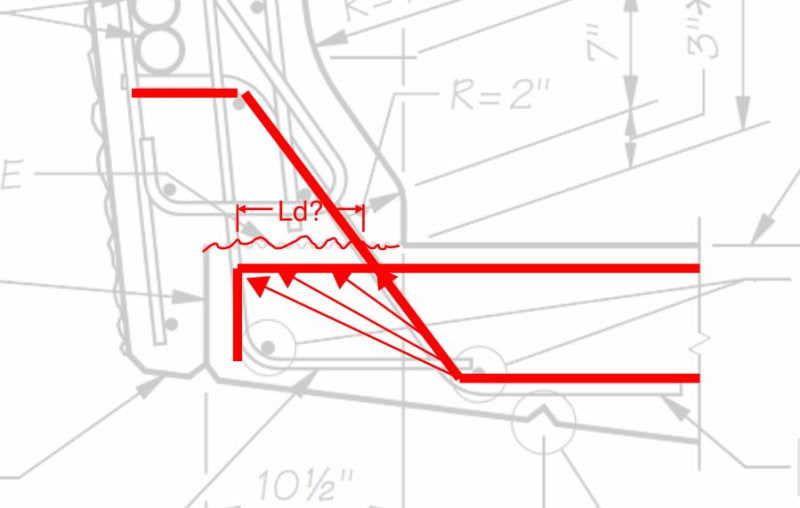beng_78
Structural
- Feb 24, 2020
- 3
I'm designing a deck overhang for barrier impact load in Washington State. The state standard details have the barrier face 10.5" from the edge of deck.
The checker has indicated that the rebar we're using (#5 @ 6") has insufficient development length for the critical section at the barrier face, when considering the length from the end of the cantilever (10.5"-2" = 8.5"), so we need to reduce our capacity by the ratio of ld prov/ld req.
In looking through multiple DOT calculations for this, I have found two states that consider the development of the bar from the cantilever end and show it in their examples. Most do not show a calculation for it (including WSDOT). Some states provide a 180 degree hook, including WSDOT, but others do not (CA, MO).
It seems like different states have different approaches to this, and I keep going back and forth on how to interpret development in this scenario. I'd especially like to hear from people in states where a hook isn't detailed.
The checker has indicated that the rebar we're using (#5 @ 6") has insufficient development length for the critical section at the barrier face, when considering the length from the end of the cantilever (10.5"-2" = 8.5"), so we need to reduce our capacity by the ratio of ld prov/ld req.
In looking through multiple DOT calculations for this, I have found two states that consider the development of the bar from the cantilever end and show it in their examples. Most do not show a calculation for it (including WSDOT). Some states provide a 180 degree hook, including WSDOT, but others do not (CA, MO).
It seems like different states have different approaches to this, and I keep going back and forth on how to interpret development in this scenario. I'd especially like to hear from people in states where a hook isn't detailed.


